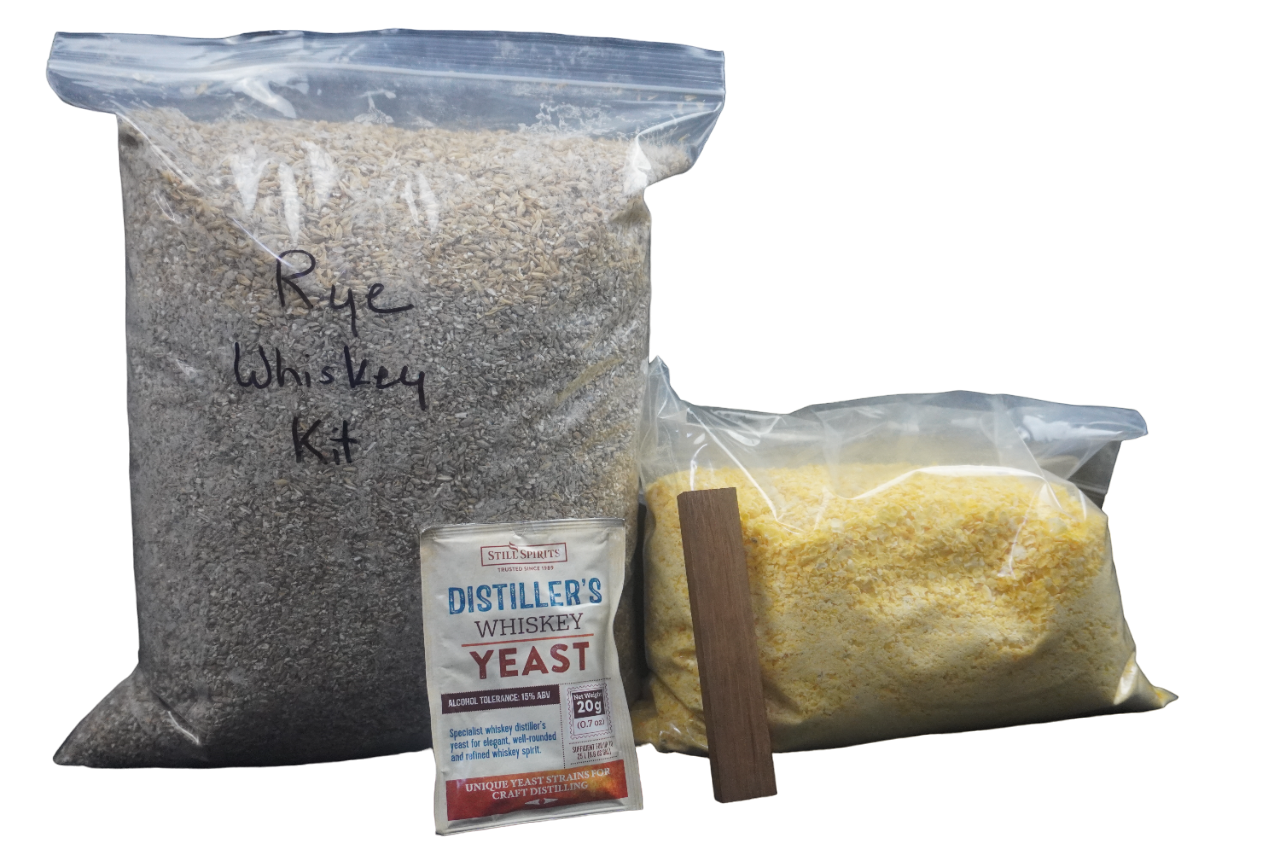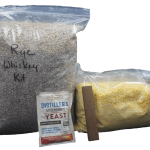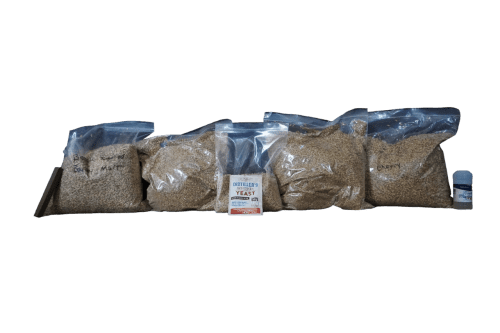Description
Rye Whiskey Recipe Kit
Rye whiskey recipe kit designed for beginner whiskey makers. Includes everything you need to make your own rye whiskey and age using oak. This recipe kit has ingredients to make a 6.5 gallon mash of rye whiskey.
Includes:
- 7.5 LB. of milled rye malt
- 5 LB. of corn (in separate bag)
- 1.5 lb. of milled distiller’s malt
- Whiskey yeast & Nutrient
- Oak stick
You’ll need:
- 8 gallons of water
- 1 tsp. Acid blend (optional for pH, not included)
- 1 tsp. gypsum (optional for pH, not included)
- 8 LB. sugar (optional for higher ABV, not included)
- Alpha and beta amylase (optional for a little higher ABV, not included. The alpha is already in the grains so you’ll mainly want the beta for an extra ABV percent or two)
This is a simple to create rye whiskey recipe designed to work with an 8 gallon distilling system. This will also work with a 5 gallon distilling system if you dial back the water to 6.5 gallons instead of 8. The distiller’s malt and rye malt will convert the starches in the corn to sugars. Below, you’ll find two methods for creating the recipe. The boiling water method is designed for distillers that don’t have brewing equipment at home and don’t want to risk burning the grains in a pot without a false bottom. This way should yield around 8-10% naturally for the recipe, so sugar may need to be added if higher ABV is desired. The stock pot method is the preferred method using a stock pot with a false bottom or some way to keep the grains off the bottom of the kettle and a temperature controlled probe so they can properly cook grains at the recommended temperature for full conversion. This method should yield around 10-13% naturally.
Stock Pot Method (preferred):
- In a large stockpot, add 8 gallons of water and add gypsum or acid blend if needed. Optimal range for pH is 5 to 7, so if the water is within this range, nothing else will need to be added at this time. Add acid blend if pH is too low or gypsum if pH is too high. Remember that you should check pH each time you add an ingredient. Heat water to 170 F.
- Provided your pot has a false bottom or a way to hoisten grains off the base, add corn into pot over the water. Stir, then place lid over pot and hold at temperature for 30 minutes.
- Now, turn off heat and add the remaining brown grains into the pot. Let sit for 60 more minutes, stirring occasionally. If using an alpha amylase, check instructions on package for optimal temperature. You’ll likely be adding your alpha in during this time.
- After the 60 minutes are up, check mash until it’s in optimal temperature range for your beta or gluco amylase if you’re adding it. Otherwise, simply just let solution cool down until within optimal temperature range for the included yeast, around 75F-80F.
- Transfer full solution or just the wort into a fermentation bucket. Pitch yeast by sprinkling over the top of the bucket and stir vigorously. Allow 5-7 days for fermentation to complete.
- Distill, then age using oak until you’ve reached your desired flavor and color, recommended at 1 month after distillation.
Boiling Water Method:
- In a large pot, boil 8 gallons of water. If your pot has the ability to control temperature, keep the water at 160-170F instead. Check pH of water and add gypsum or acid blend if needed. Optimal range for pH is 5 to 7, so if the water is within this range, nothing else will need to be added at this time. Add acid blend if pH is too low or gypsum if pH is too high. Remember that you should check pH each time you add an ingredient.
- In a fermenting bucket, add grains and pour boiling water over mixture. Stir mix, then place bucket over lid and let rest for 90 minutes. If using an alpha amylase, check instructions on package for optimal temperature. You’ll likely be adding your alpha in during this time.
- After the 90 minutes are up, let solution cool and check mash every so often until it’s in optimal temperature range for your beta or gluco amylase, if you’re adding it. Otherwise, simply just let solution cool down until within optimal temperature range for the included yeast, around 75F-80F.
- Pitch yeast by sprinkling over the top of the bucket and stir vigorously. Allow 5-7 days for fermentation to complete.
- Distill, then age using oak until you’ve reached your desired flavor and color, recommended at 1 month after distillation.








Reviews
There are no reviews yet